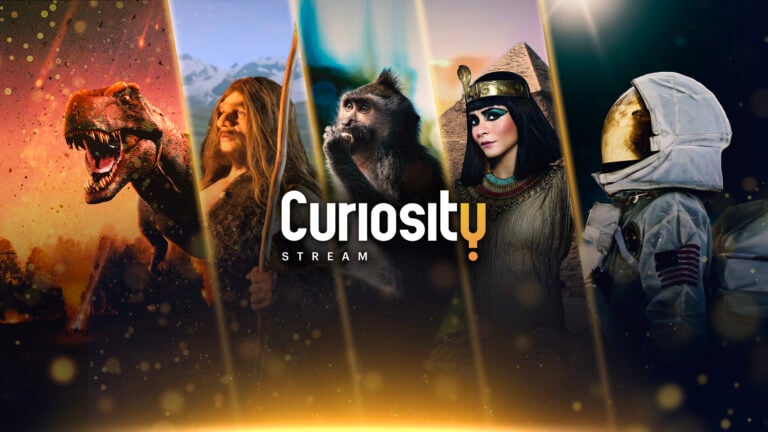
CuriosityStream has seen exceptional demand for its video, audio, image, and data assets
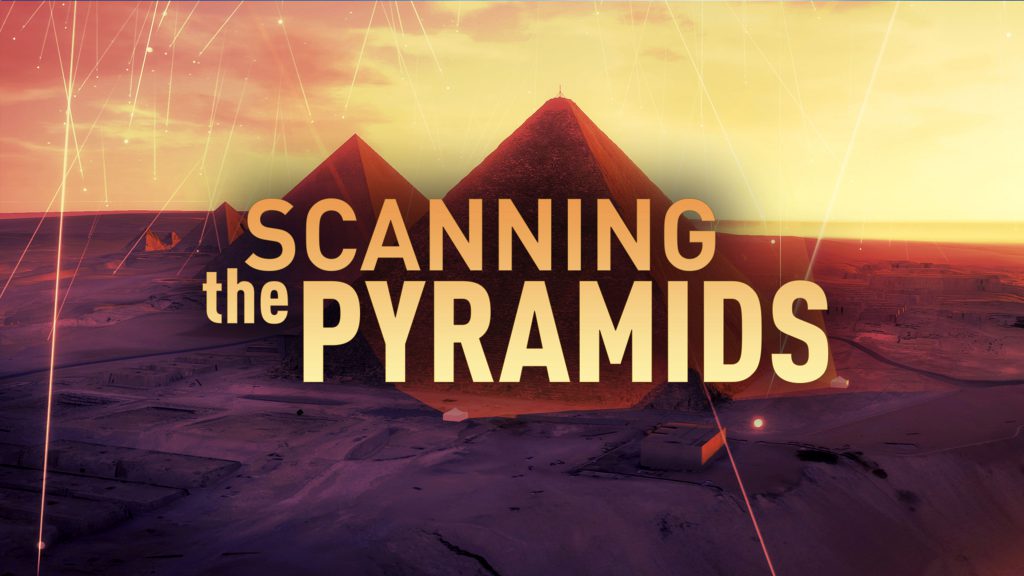
The Great Pyramid at Giza has fascinated scientists and treasure seekers alike for more than 4,000 years. Add cutting-edge technology into the mix… and new doors are opening for exploration.
The Scan Pyramids project combined non-invasive techniques like infrared thermography and 3D scanning. It was an incredible mix of art, science and technology that led to an extraordinary find — mysterious new chambers.
Produced in collaboration with Japan’s NHK, France 5 and PBS, Scanning the Pyramids takes you behind the scenes of the 3-year project, with exclusive access inside the structure that’s remained shrouded in mystery for centuries.
And as you can imagine, filming in and around the pyramids alone is a formidable task—coordinating the international team of researchers and filmmakers makes it even more of a challenge. Under the direction of seasoned documentary filmmaker Florence Tran, the result is a stunning, exhilarating look at groundbreaking research as it happens.
We asked Flo about some of the challenges her team faced, and some of the fascinating experiences along the way.
————
FT: The scientific mission itself was challenging and took a long time to coordinate, especially with an international team of scientists who sometimes don’t understand each other’s language, methods of analysis or results. But they always found a way to work it out, stronger as a team because of their commitment to the project.
On the film side, we had French, Egyptian and Japanese cameramen in the field covering the operations. Fortunately, I had lived and worked for several years in Egypt and had previously made a film about Egyptian filmmakers and the country’s teeming cinema industry. So, I already had a network of great professionals who I knew could trust.
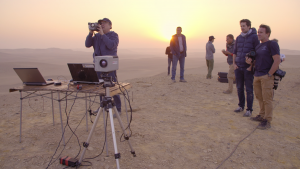
The Japanese tend to film in different ways than we do, but on the first shoot, the Egyptian and Japanese crews broke the ice over a few glasses of sake and Egyptian Stella beers. We discussed our different habits and needs…and we never had any coordination problems. We shared everything we filmed.

FT: The first difficulty was finding key people who would embark on this long and complicated adventure and accessing the official organization in Egypt. It took Mehdi Tayoubi (of the French Dassault Systèmes software team) several years to find Dr. Hany Helal, now a professor at the Faculty of Engineering at Cairo University, who was once the minister of Higher Education and Scientific Research in Egypt. He knew the ins-and-outs of the Ministry of Antiquities. With his understanding of Egyptology and advanced experimental research like particle physics, he was critical to the mission.
Once we found him, I happened to be living in Egypt working on other films, so I met with Dr. Helal on Medhi’s behalf in September 2013. Just a week prior to our meeting, the Faculty of Engineering building had been burned and partly destroyed by Muslim Brotherhood partisans. Dr. Helal was in a temporary office, tending to urgent matters, and here I was talking about scanning the pyramids with infrared thermography cameras and unknown techniques using cosmic particle detectors. It seemed utterly unconceivable, almost absurd, at that time. The whole country was in shock, on the verge of civil war for some people, so I was not very optimistic. But to my surprise, he took the time to listen, said it would be great for Egypt to participate in such a great international mission and he agreed to meet Mehdi and his team in France not long after. It took another 2 years to really coordinate and launch the mission, and by 2015, Egypt’s political situation had settled down. The Minister of Antiquities strongly supported the Scan Pyramids mission.
During that time of global international terrorists, it was a nightmare for the logistics team in charge of moving chemicals and bizarre instruments through customs in all of these countries. In comparison, getting our filming equipment through was a piece of cake. We couldn’t complain.
FT: During summer, temperatures can be really hot, but again, it was more difficult for the scientists than for us. We are used to being in the field and have proper filming equipment for this. But that’s not the case for state-of-the-art particle physics prototype devices which are usually kept in a completely controlled and safe environment. For example, the French scientists who had to set up their equipment outside, had to face warm winds, sandstorms and extreme temperatures. They had anticipated some of these problems but not all of them. But despite these trials, they managed to make their equipment work properly.

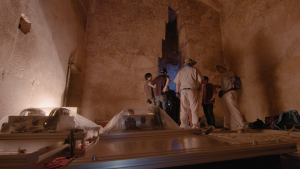
FT: Climbing the pyramid was exhilarating. From up there, you really admire the work of ancient Egyptians even more… and wonder how they did. It is truly vertiginous. We thought at the beginning we wouldn’t need professional climbers to ascend but moving so many people up there in such a short time, it was really not an option to do without. Going down is actually more dangerous than going up. You can slip easily, and any fall can certainly be fatal. When climbing was still allowed for the public, there were many accidents, which is why the Ministry of Antiquities rightfully forbids tourists to climb up there today.
FT: The most difficult part of making this film was actually being really patient, to follow all the scientific steps, day after day, without disturbing the scientists. We couldn’t re-enact anything or bother them with fancy, sexy filming ideas. We had many, many shoots (more than 70 days) in Egypt, Japan and France over 2 years. Sometimes I was alone with my camera late at night because we couldn’t pay for a crew. So, in the end we ended up with lots of repetitive footage. So, that meant the second biggest difficulty was to edit all this material. It took us several months to get a clear and functioning narration. And, because we had to wait for the “end” of the story… the action was developing at the same time we were filming and editing.
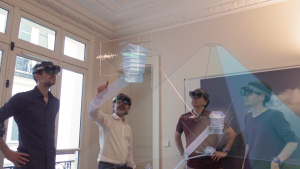
FT: In 2016 [well into the process of the experiment and filmmaking], Dr. Zahi Hawass was named the head of a special committee of Egyptologists who are officially in charge of examining and interpreting Scan Pyramids results. As you see in the film, the first meeting between Dr. Hawass and the scientists was a bit of a shock—he was very skeptical of their work and techniques and expressed it vividly. The scientists didn’t know him and were surprised to discover his famously strong temper.
After this, the team feared their work could be stopped at any time, so they changed strategy. Initially, the detector of the KEK was eventually supposed to be installed in Khafre’s pyramid, as were the CEA’s detectors. It was the mission’s first assignment to scan the 4 biggest Egyptian pyramids: the Bent, the Red, Khafre’s and Khufu’s.
But, when Dr. Morishima detected this huge anomaly for the first time in the Khufu pyramid, Dr. Helal and Mehdi decided to focus all efforts on this pyramid. All 3 muographic teams then pointed to the same location. The idea was to have complete counter-expertise within the mission itself, to be irreproachable and unattackable, scientifically speaking. So, the pressure and demanding attitude from Dr. Hawass was—in the end—a blessing.

FT: First, I have to tell you that we waited months for this moment to happen. Particle physicists are especially rigorous and anal when it comes to analyzing and checking their results. Their reputation was at stake and they would never publish anything they are not 300% sure of. All these extra precautions sometimes seemed superfluous to us and made us (the filmmakers, producers and broadcasters) all exasperated and impatient. But, you cannot dance faster than the music and respecting the scientific process was mandatory. When the scientists all gathered in Paris, they spent hours arguing on highly technical points. Only they understood what they were talking about, which was a bit frustrating, especially for Mehdi and me. But their perspective is different from us neophytes—for them, details are of a great importance and we were just waiting for the main conclusions. So, in a way, we seemed to be more relieved and happy than they were.
Despite this “victory” moment, everyone remained very cautious of what would happen next. There was no moment of exhilarating or overwhelming joy. It’s not time yet! Though it took 2 years of hard work to get there (not to mention the long preparation) the real exploration is just beginning. Everybody now wants to know what is inside this big cavity!
Watch both the original and extended versions of Scanning the Pyramids on CuriosityStream!
Copy Text

CuriosityStream has seen exceptional demand for its video, audio, image, and data assets
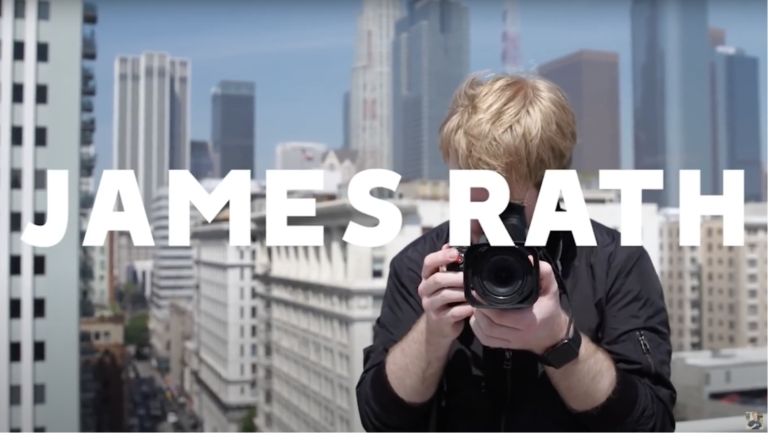
Viewers will tag along with Rath to a variety of locations around the globe, experiencing places beyond sight-seeing, and using travel as a relatable mechanism for the audience.

These Series on CuriosityStream Will Give Your Brain the Stimulation It Needs At CuriosityStream, we know what it’s like to be a knowledge junkie. Your craving for knowledge is insatiable. Outer space … biology … world wars … …you name it … …you need to know. Well, take heart: you can indulge your addiction […]